La Sagrada Familia is the beating heart of the city of Barcelona. It can be seen across the skyline almost anywhere you go. The top of the spires peeked out, watching over the city at all times. Designed by Catalan architect Antoni Gaudí, construction began in 1882, and you might be surprised to learn that development is still ongoing. Currently, the best projection on its completion is 2026, a significant year which marks the centenary of the death of Gaudí. Despite its incomplete nature, this is THE MOST important sight to see when visiting Barcelona. Its history, design and the feeling you get upon stepping inside are unparalleled. The church feels like a summation of what Barcelona is all about and understanding it before visiting or while you tour is essential to better enjoying this fantastic monument.
This is my highlights tour but if you’re interested in a super in-depth guide, check out my ‘The Complete Guide to Visiting Gaudi’s Sagrada Familia‘.
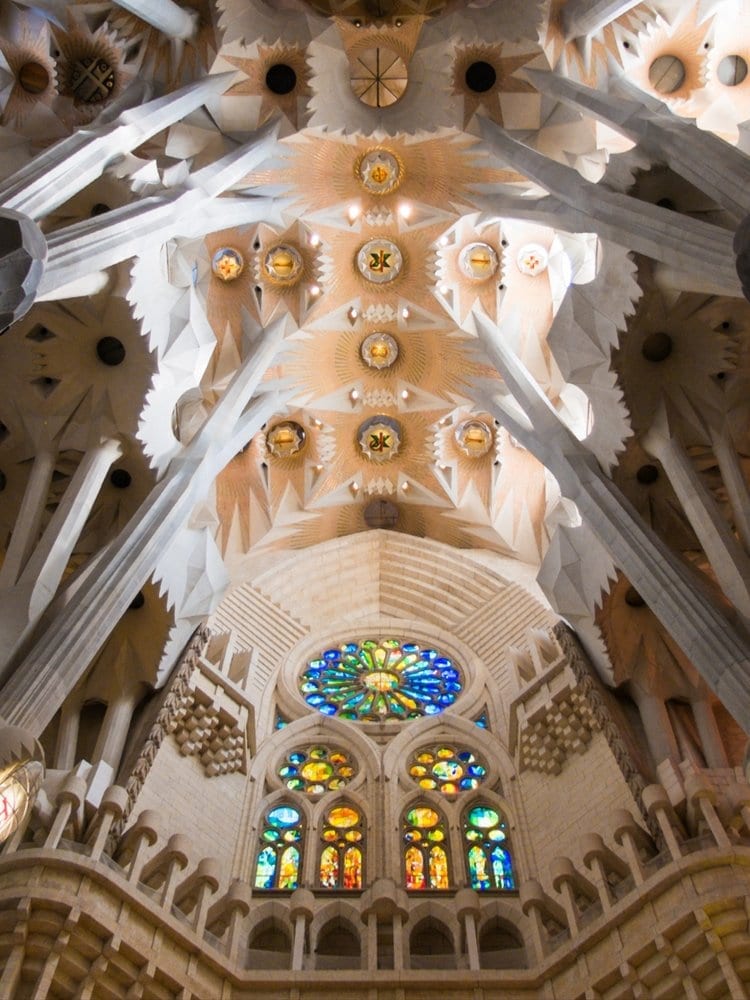
Access
The Sagrada Familia is pretty easily accessible since it’s located in the centre of town. By metro, you just need to hop on the L5 line towards Sants Station. Upon getting out of the metro, simply follow the signs for the ‘Sagrada Familia.’ If you are arriving by bus, get on the H10 and get off at the València, Lepant stop. If you bought a Hop-On Hop-Off Bus ticket, these also all stop right in front of the church.
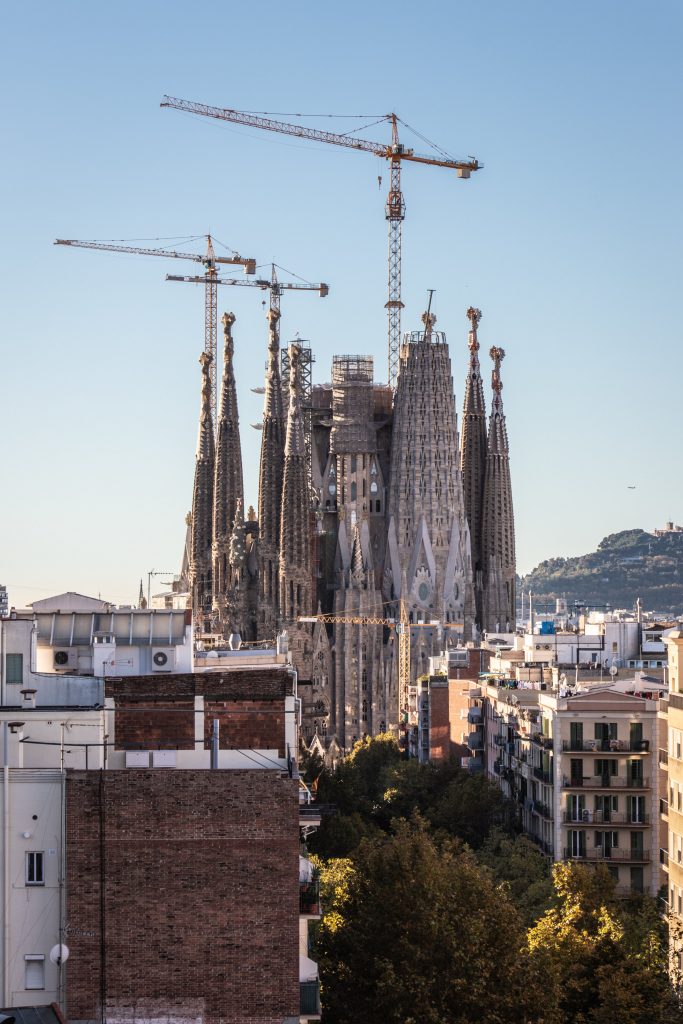
Tickets
As the Sagrada Familia is the most famous landmark in Barcelona, it draws in some shocking numbers daily. It’s no surprise that thousands of people enter their doors daily. To ensure you can experience this church easily, it’s always best to book your tickets in advance. You can buy your tickets online up to two months in advance, but I’d advise that you only book them about a week or two before your arrival unless you’re visiting during the holiday season.
When to Go?
When booking your ticket, you need to select a specific entry time. I’d recommend not leaving it too late at night since you want to give yourself plenty of time to explore before the church closes. I’d recommend booking your ticket an hour or two before sunset. That way, you can see the building in the light of day and enjoy the magnificent lighting effect of the sunset across the structure. The golden light inside the Basilica casts the most magical glow over the entire nave, and it feels like being transported to another earthly plane of existence.
Which ticket to buy?
There are basically four ticket types for visiting the Sagrada Familia
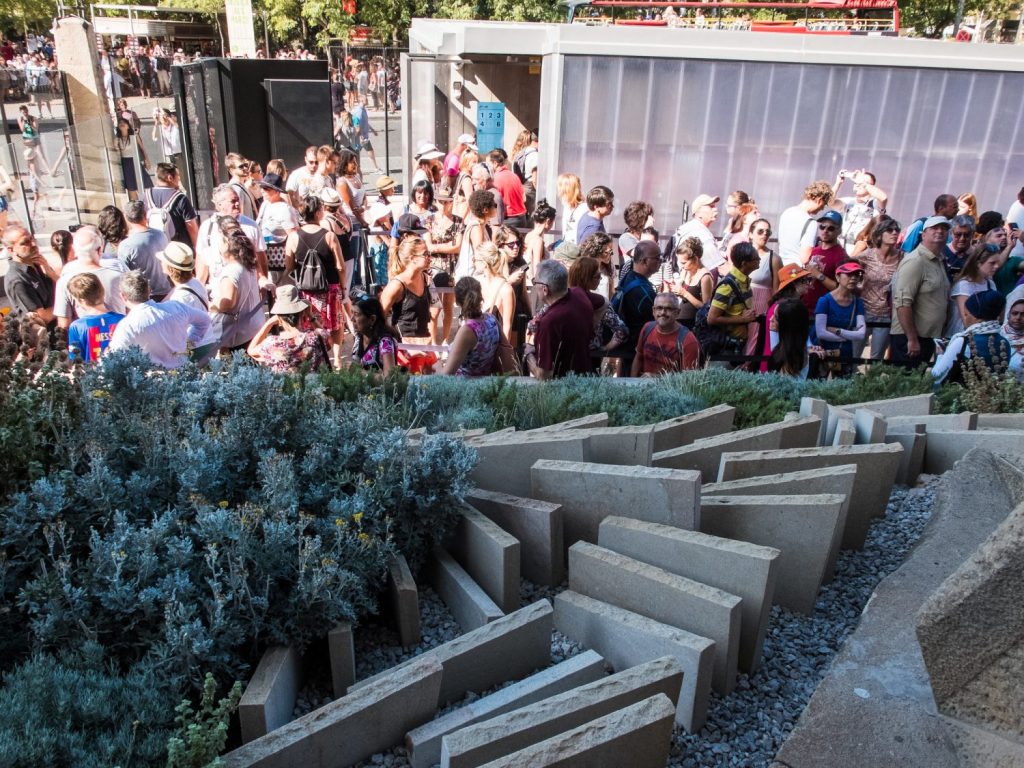
History of La Sagrada Familia
During the 19th century Barcelona, along with the rest of Europe, was undergoing a significant change. The church that had once held such immense power and authority over cities now lost its cultural influence with the growth of independent governments. Urban lifestyles were changing the way that Catalonians lived, and more and more, the church was becoming less and less a central part of their daily routine.
In 1866 the Spanish clergy created the Association of Devotees of Saint Joseph, who took it upon themselves to help bring back the relevance of faith and spirituality in Catalonia. They raised enough money to start construction on a wondrous temple, so spectacular and eye-catching that it would be the spot where pilgrims from all over the world would travel and which would encourage locals to come back into the fold. The church was dedicated to the Holy Family. The first architect of the church was Francisco de Paula del Villar y Lozano, but soon after construction started, he resigned. They then enlisted Catalan architect Antoni Gaudí. And that one decision would be the catalyst for the creation of what is now one of the greatest manmade wonders of the world.
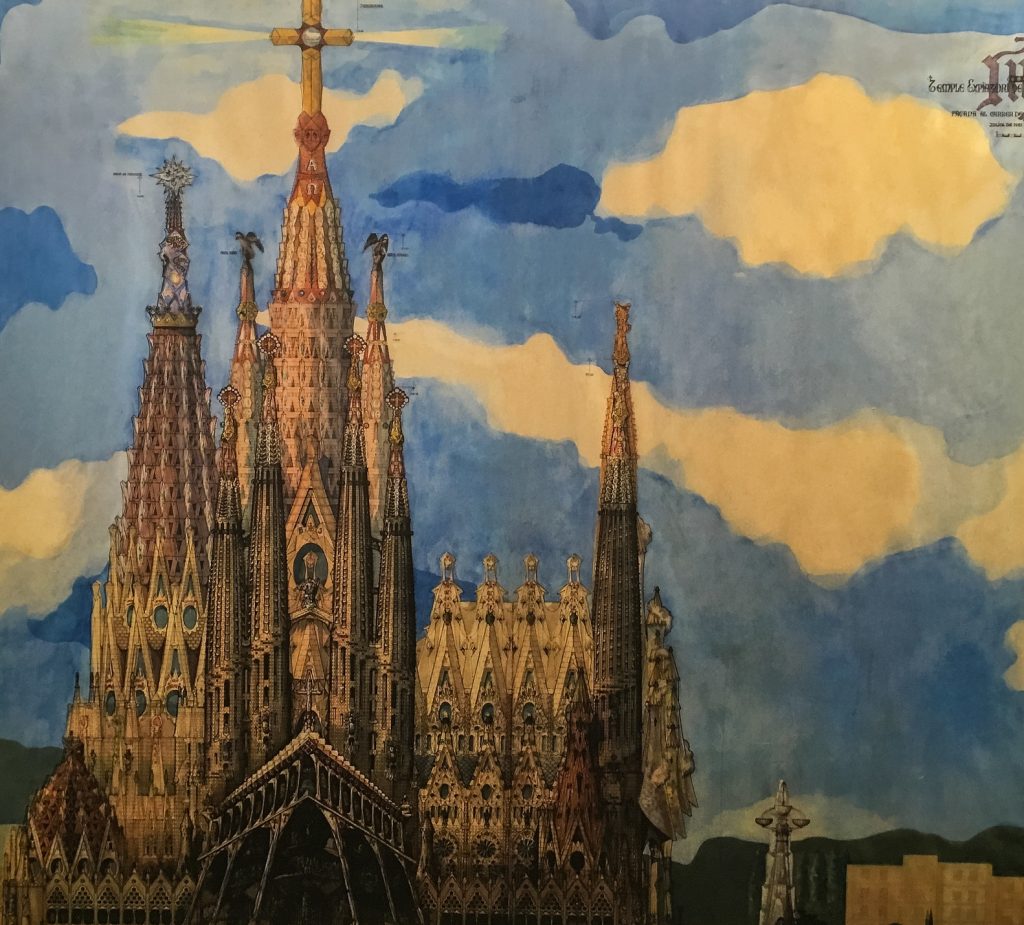
About La Sagrada Familia
The Sagrada Familia is 4,500 square meters large, the size of an American football field, and when you see it in person, you can truly understand just how big that is. The Basilica’s layout is that of a traditional Latin cross design. The Latin cross design features five naves, a crossing, an apse and an exterior cloister-style ambulatory.
The exterior has three different facades, each a varied work of art whose imagery tells a story. Although not yet built, the tallest part of the church will be 172.5 meters tall, the highest point in the city but shorter than Montjuic Mountain (because no manmade building should exceed what God created). The church can hold 14,000 worshippers! That’s the size of a small city. Gaudí wanted to create a place where everyone in the city could gather in one place, making it feel like it was always open to whoever wanted to come in. A small church just wouldn’t have had the same effect.
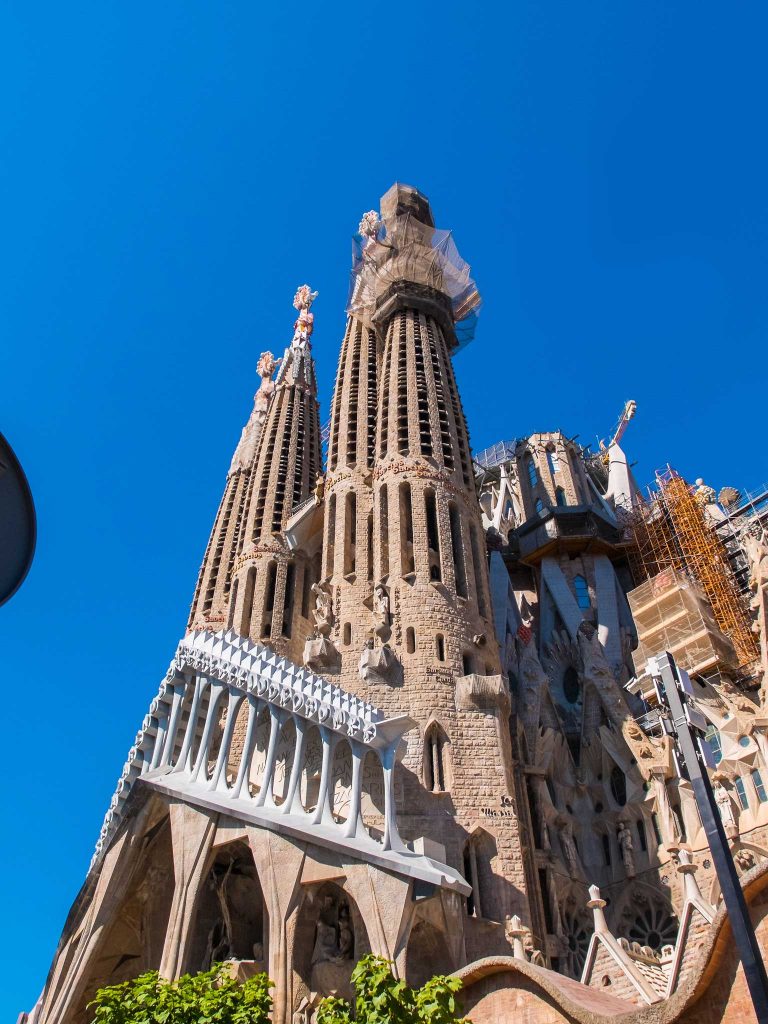
#1. The Nativity Facade
This was the only part of the church which was entirely designed by Gaudi and which he almost saw finished as it was completed in 1935, just after his death. He was there almost daily overseeing the work, and it feels like the part of the church which is the most personal. The three porticos on the Nativity facade are each dedicated to a theological virtue of the three members of the Holy Family; Hope, Charity and Faith.
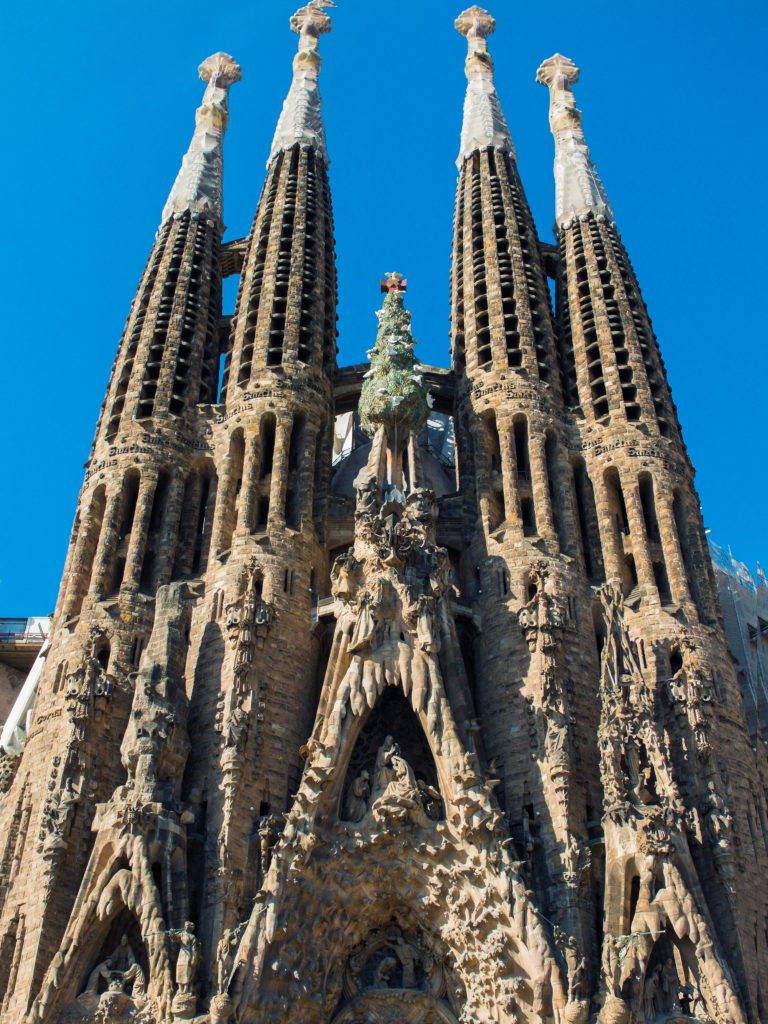
#2. The Tree of Life
At the top of one of the Nativity facade’s porticos stands the Tree of Life, a bright green cypress tree. The tree is one of the only colourful parts of the exterior, covered with polychrome. Polychrome decorates architectural elements, like pottery or sculpture, in various colours. The cypress tree symbolizes eternity since it’s an evergreen plant and never loses its leaves. Covering the tree are 21 white doves which fly out of their nests and into the sky. On the top of the tree, like a Christmas Star, is the red and white symbol of the holy trinity. The Greek cross formed the base of this symbol. The Greek cross combines the letters’ alpha’ and ‘omega,’ which mean the beginning and the end.
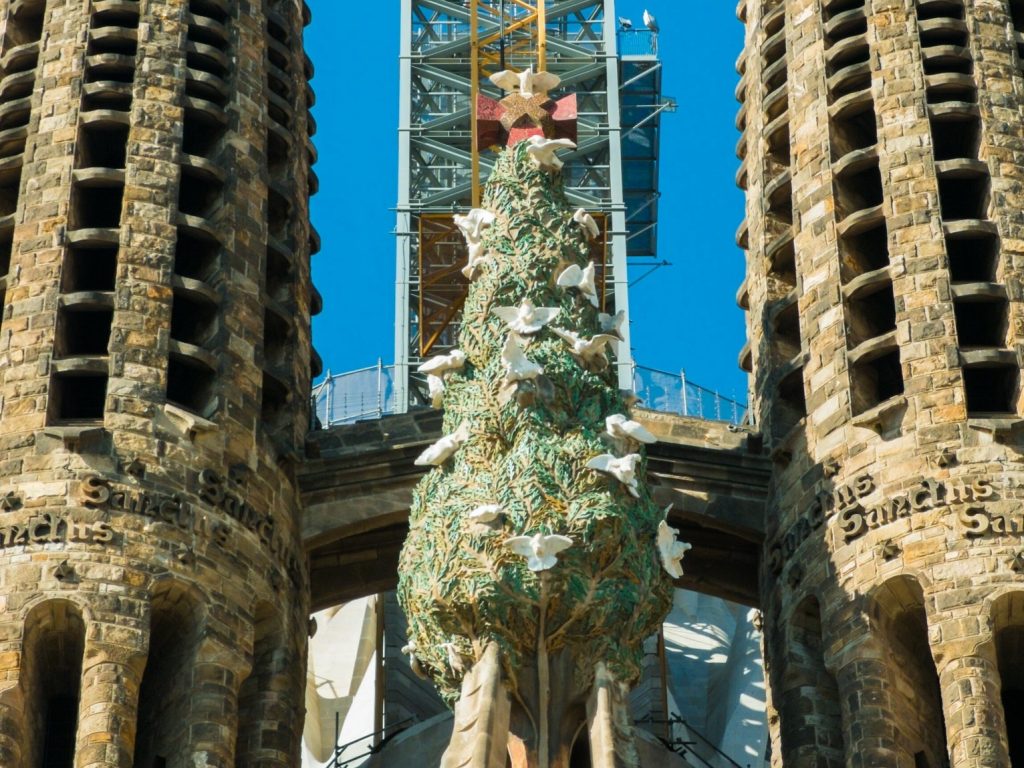
#3. The Charity Portico Vault
The vault in the Charity portico contains the scene of the Annunciation where the archangel Gabriel tells Mary that she is the chosen one who will bring the son of God into this world. Surrounding this petite scene are the signs of the zodiac depicted in constellations across the sky, just as they would have been on the night Jesus was born. Bands of rosary beads surround the scene.
Hanging around the rosary are medallions carved in stone representing the ‘Miraculous Medals’ you find around rosary bracelets. Above the Charity doorways, here is a chorus of angels. Each of them is a musician, playing instruments popular in both religious settings, like the lute, the violin and the harp, and instruments more accessible to the commoners, like the guitar, the bagpipes and the tambourine. Once more, this was a way of the common fold being able to see themselves in the divine. Running up between the two sets of stained glass windows behind the angels is the multi-pointed star of Bethlehem. This was the star that shone in the sky to announce the birth of Jesus.
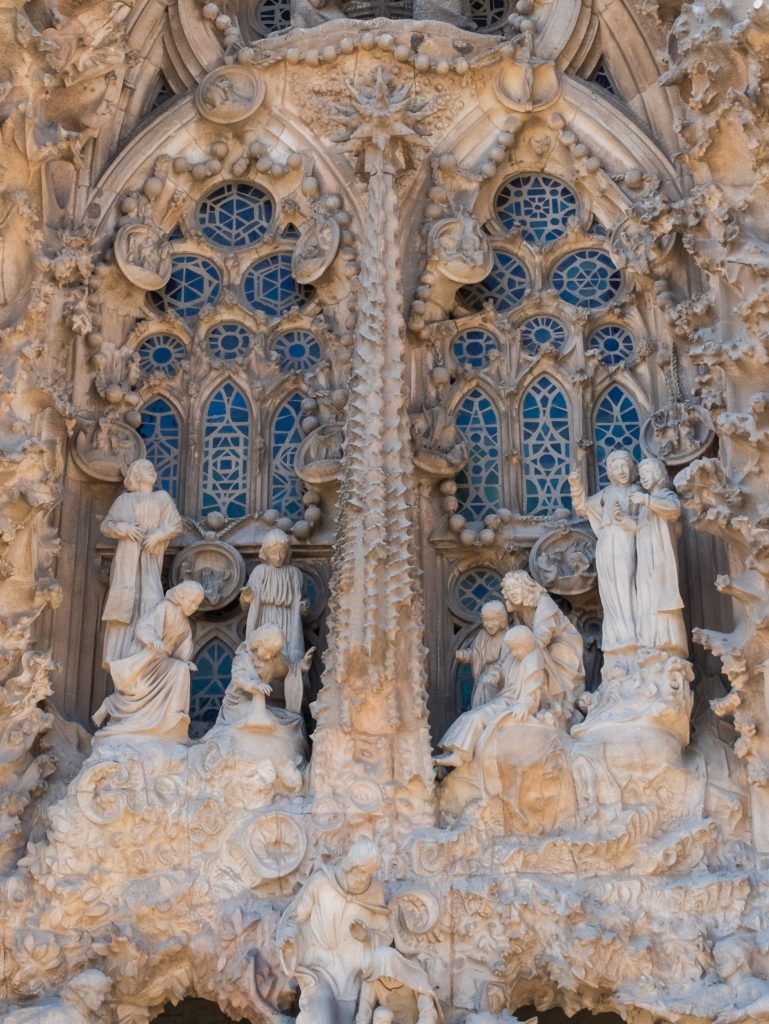
#4. The Spires
Gaudi desired to make the Sagrada Familiar as the tallest building in Barcelona. He was inspired by stories of architects in medieval times who built their churches as the central figure in the city. These churches needed to be tall as they were often used as meeting points, a guiding light to those travelling into town. Their bell towers signal the beginning of the workday or even warn people of fires, earthquakes or other devastating events.
Gaudi wanted to implement this same idea, but just one tower wouldn’t suffice. He decided to far and away exceed anything created for basilicas before. His design called for eighteen spires, reaching up towards the heavens. The hollow and hole-filled design of the spires makes them look like a beehive or anthill, as the stone’s colour closely resembles the earth. But the hollow design was actually a form of lanterning, an architectural element that illuminates the church while also giving it enormous height and grandeur.
#5. The Rosary Portal
You’ll first pass through the Rosary Portal to enter the church’s interior. This incredible doorway is called the door of ‘Our Lady of the Rosary.’ In the tympanum above the doorway is the sculpture of the Virgin Mary holding a crowed baby Jesus. Mary also wears a crown, as she is the Queen of Heaven on Earth, but she is also symbolically crowned with an archway of roses on the portal above her. Since the rose is the symbol of purity is almost always hidden somewhere in depictions of the Virgin Mary. Above this doorway is a cupola lantern which perfectly lets in a ray of light which highlights Mary’s face. This effect is almost too beautiful, and it looks heavenly if you didn’t know the cupola was there.
#6. The Arborescent Columns
The interior of the church was meant to resemble a spiritual forest. Gaudi wanted it to feel like a retreat into nature. Gothic churches were revolutionary in creating openness and space; they wanted the interior to feel light and the high ceilings as if they were reaching up toward the heavens. Gaudi once more wanted to take this to the next level. He wanted to incorporate huge stained glass windows on either side, which meant they could not be load bearing, so that load had to be carried elsewhere.
Gaudi researched for years to develop this new concept called the ‘Arborescent Columns.’ Inspired by the strength and beauty of large trees, the columns tilt slightly about their height so they can withstand the roof load. They also split off in two directions, like the branches of a tree and also like a flying buttress to better support the vaults. You expect to see birds flying from branch to branch, making a nest for themselves at any time. And what better place to do it?!
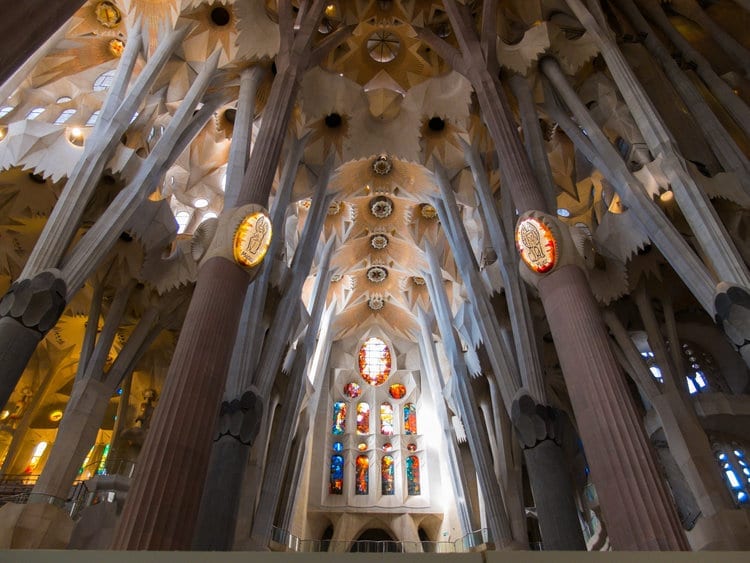
#7. The Vaults
Gaudi combined classical Gothic architecture and Catalan art to create these star-like vaults on the roof, which light could easily pass through. The stars are formed by combining concave and convex hyperboloid shapes, which are critical systems used to disperse light and spread out the roof load. The shape of the stars also closely resembles the form of palm leaves, a powerful symbol in Christianity. Each vault centre is filled with a light diffuser decorated with colourful stained glass in various Christian symbols.
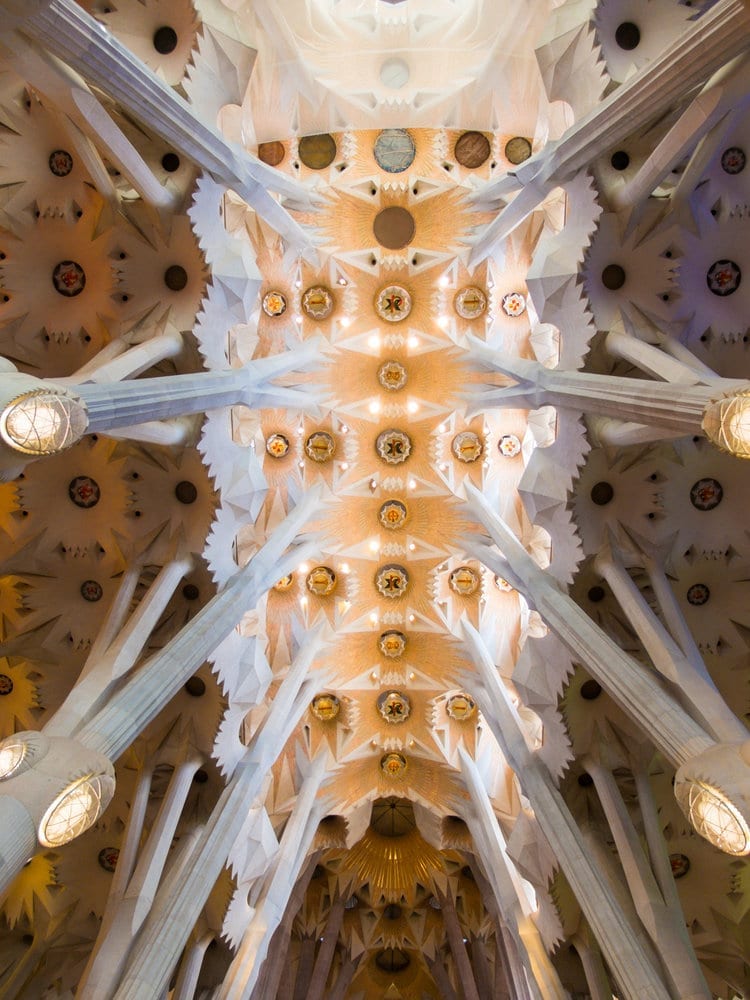
#8. Stained Glass Windows
Light is one of the strongest symbols of faith in Christianity, so it was crucial for Gaudi to bring as much natural as possible, the light of God, into the Basilica. Gaudi developed a new way of creating stained glass, comprised of three panes resulting in a mixture of tones and colours to cast a magical glow into the nave. The leading artist who created these windows was Vila-Grau. Vila-Grau used curved shapes to create abstract forms and ensured that the warm and cool tones were kept separate, resulting in this consistent light flow.
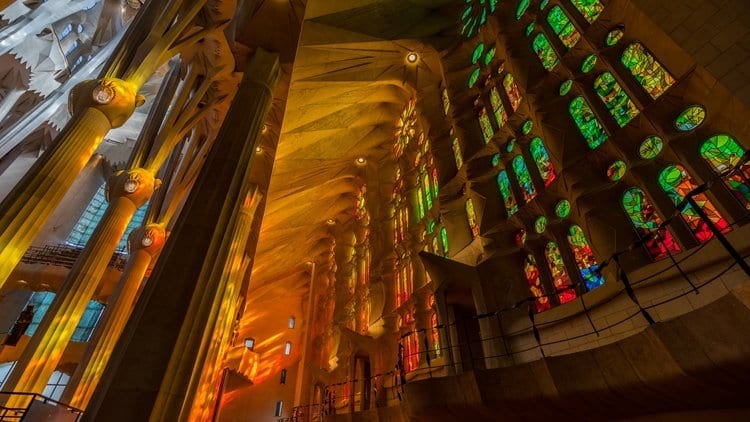
#9. The High Altar’s Baldachin
Over the high altar, we find the incredible sculptural masterpiece, the ‘baldachin.’ A baldachin is a large canopy in a heptagon shape with seven edges, traditionally placed over an altar. These sever corners represent the seven gifts of the Holy Spirit; wisdom, understanding, counsel, fortitude, knowledge, piety and fear of the Lord. Fifty little hanging lights illuminate the rim of the canopy. Around the rim springs grape vines and wheat, the symbols of the Eucharist. A ribbon around the baldachin writes out the Prayer of Glory in back-lit red and Gaudí-style lettering.
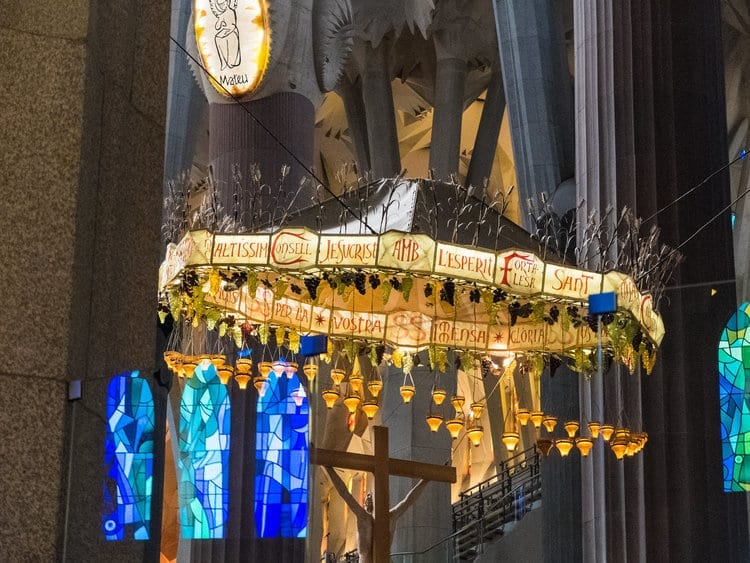
#10. The Choir Galleries
Above the nave is a separate space that houses the choir during church services. This area can hold over 1000 singers since Gaudi wanted their voices to fill this enormous temple. Gaudi thought the importance of acoustics in the building to be of the utmost importance as he loved music so much. It was one of the few ways he could unwind and relax. The hyperbolic vaulting he used throughout the church was made to reverberate the sound in a harmonious way and provide light.
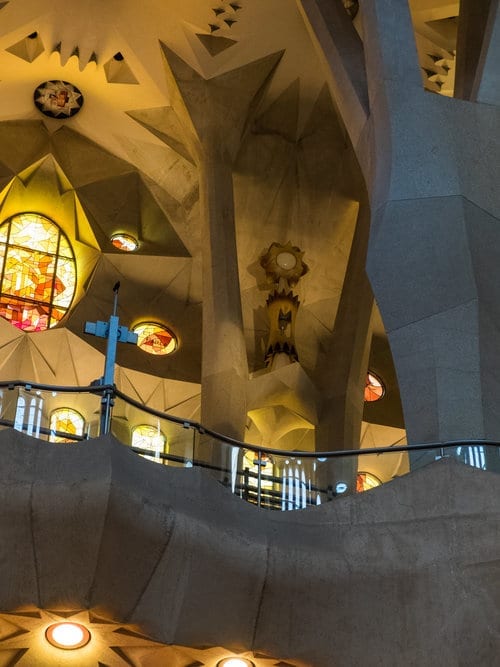

#11. The Passion Facade
The final portion of the tour of the church is the Passion Facade. This facade is located on the side of the building where the sun sets, the darkness reflecting the ultimate sacrifice and death Jesus would incur. Compared with the ornate, natural forms of the Nativity Facade, the Passion Facade is gloomy, stark and restrained. Gaudi made sketches for this part of the church when he fell ill with a terrible sickness and almost passed away.
This illness was the closest to death Gaudi would ever come since his eventual death would sneak up on him. During this sickness, he was consumed with fear and poured all these emotions into the design of this part of the temple. While Gaudi died long before this part of the church began construction, architect Josep Maria Subirachs took up his mantle and made it his mission to create precisely what Gaudi had envisioned. Subirach’s figures are inspired by expressionism, in contrast to the realistic figures on the Nativity portal. There are over 100 figures depicted, grouped into 13 different scenes. They rise upwards in an S-shape, starting, in chronological order, with the last supper and ending in the crucifixion.

#12. The Gaudi Museum
Located in the basement of the cathedral is the Antoni Gaudi Workshop and Museum. Although many of the original documents and plans were destroyed when a bomb went off during the Civil War, this newly created space is where the city has taken it upon itself to conserve, restore and put on display pieces of the history of the construction of this church. You can find drawings, period photographs, ceremonial furniture and several scale model copies of the originals here. There is also a model of the original workshop where Gaudi would spend all this time.
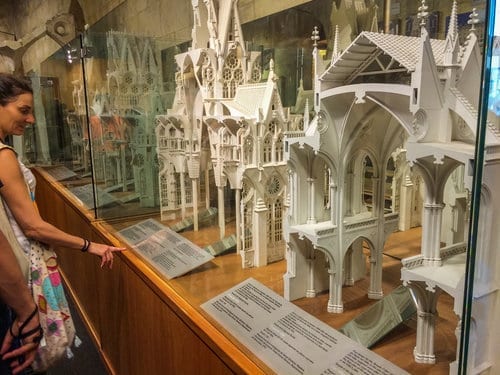

Have you been here before? What was your favourite thing to see? If you’re on your way, let me know what you’re looking forward to the most.
Happy Travel Adventurers!
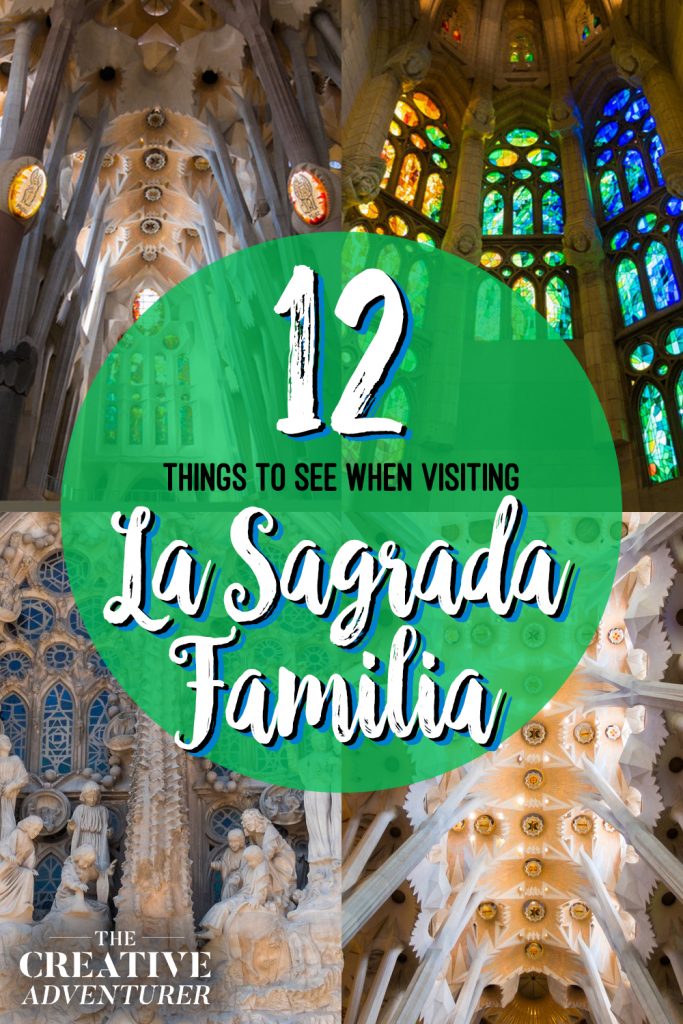
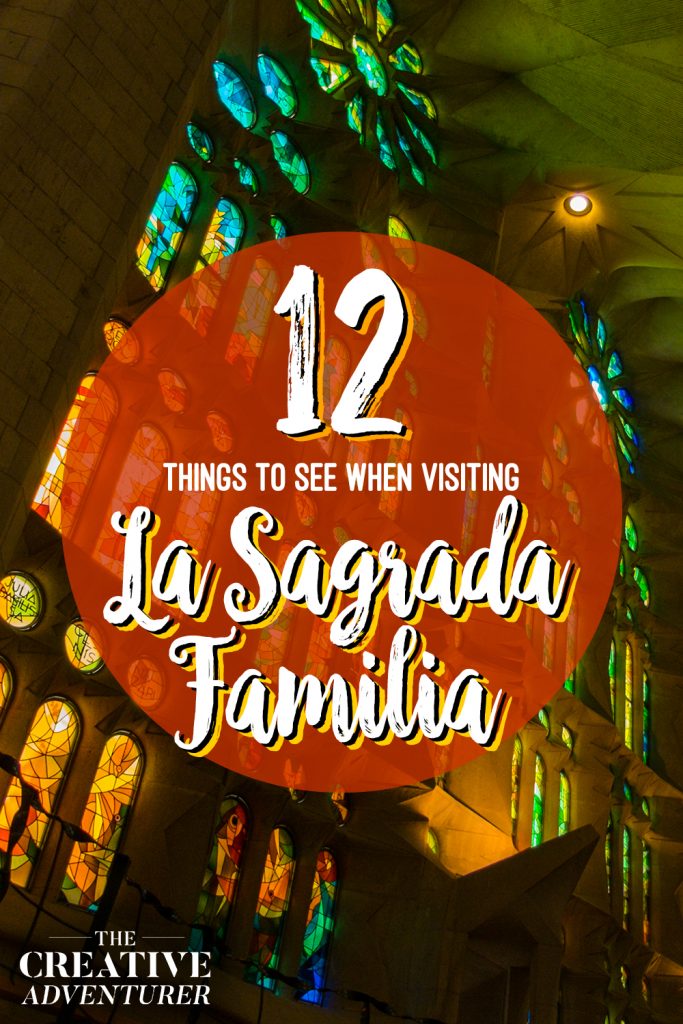



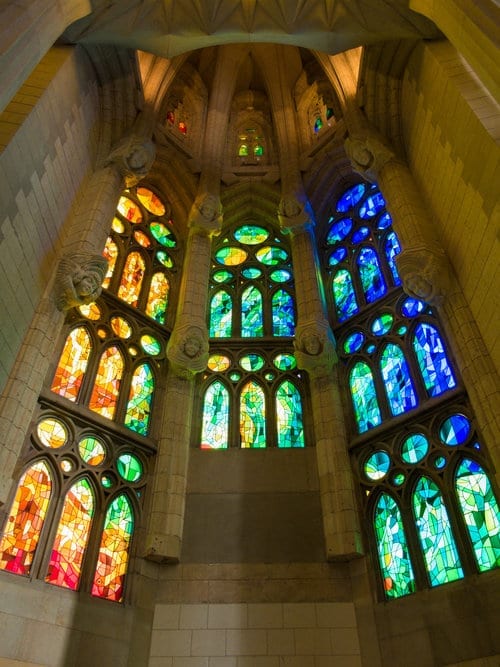
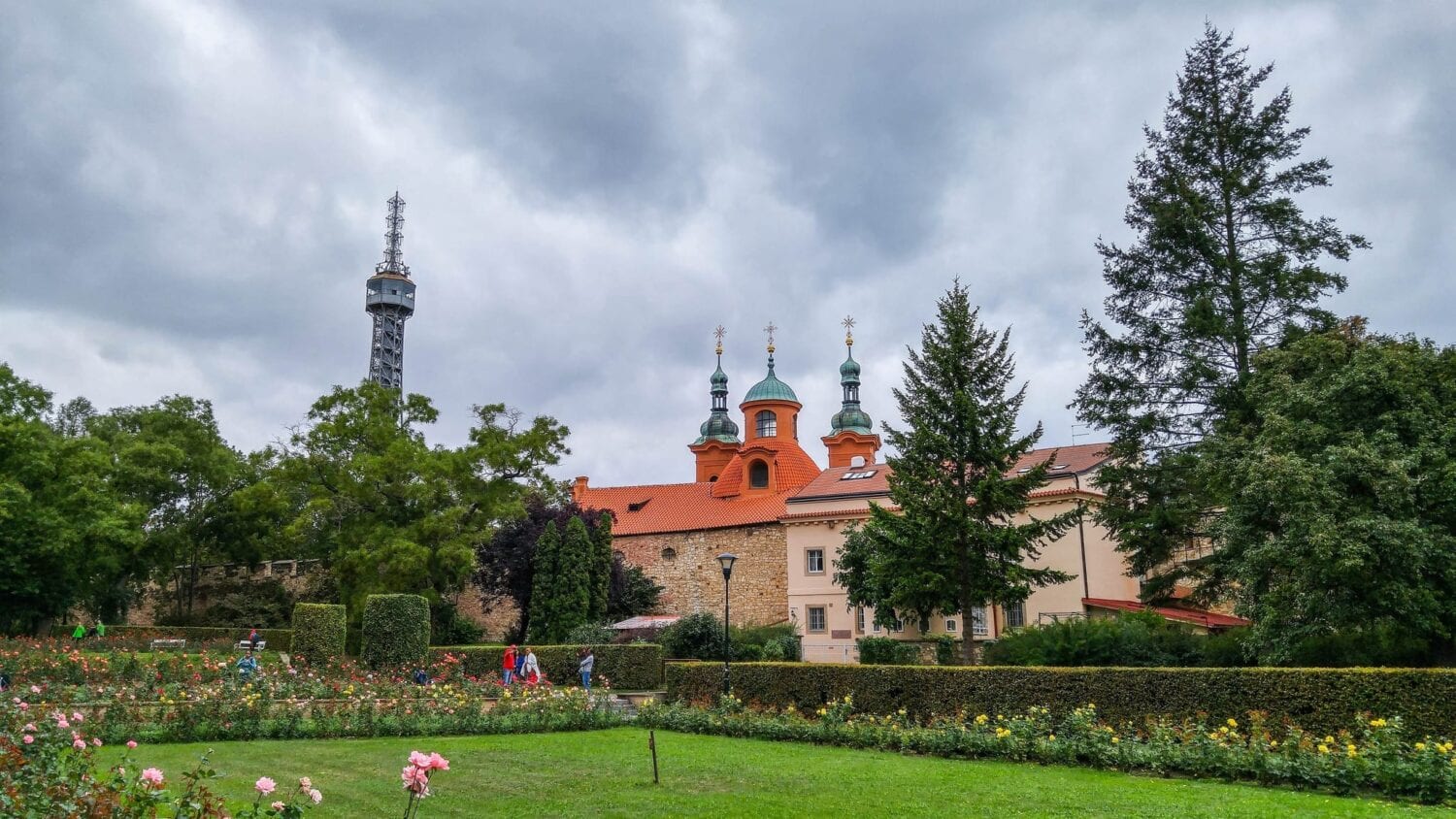
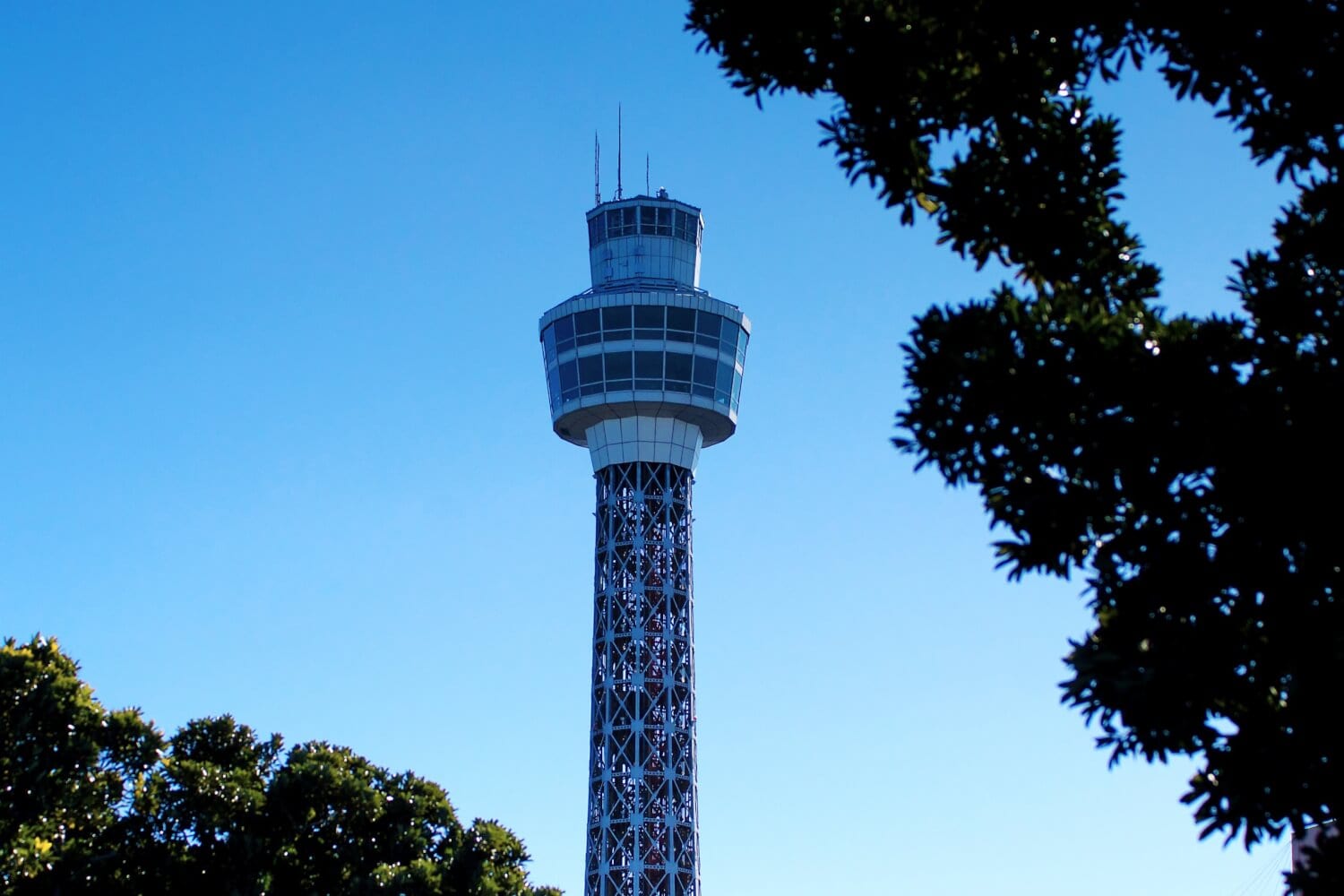
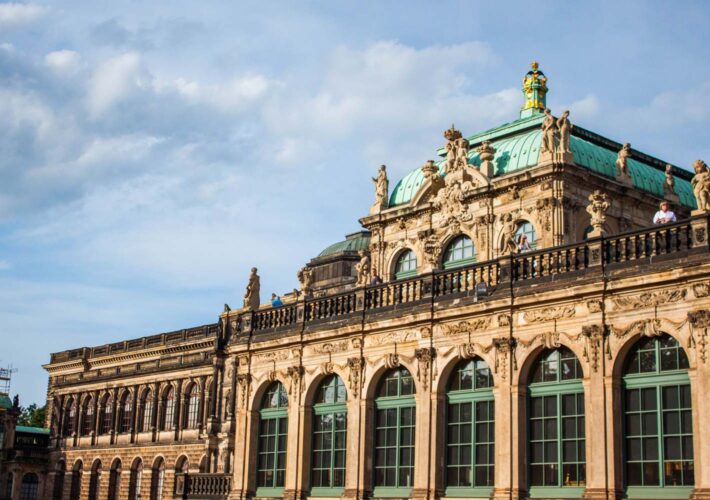
Leave a Comment